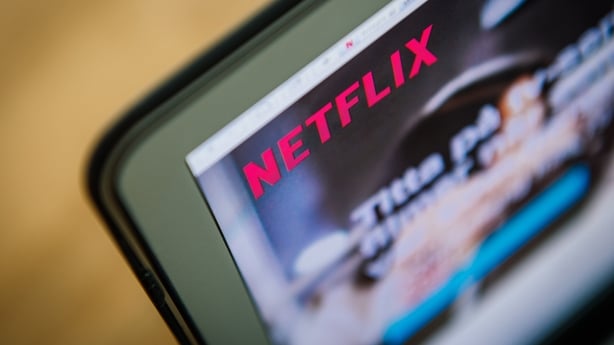Netflix said inflation, the war in Ukraine and fierce competition contributed to a loss of subscribers for the first time in more than a decade and predicted more contraction ahead, marking an abrupt shift in fortune for a streaming company that thrived during the pandemic.
Netflix's 26% tumble after the bell on Wall Street last night erased about $40 billion of its stock market value.
Since it warned in January of weak subscriber growth, the company has lost nearly half of its value.
The company said it lost 200,000 subscribers in its first quarter, falling well short of its forecast of adding 2.5 million subscribers.
Suspending service in Russia after the Ukraine invasion resulted in the loss of 700,000 members.
The poor results pummeled other video streaming-related stocks, with Roku dropping over 6%, Walt Disney falling 5% and Warner Bros Discovery down 3.5%.
Netflix, which currently has 221.6 million subscribers, last reported losing customers in October 2011.
The company offered a gloomy prediction for the spring quarter, forecasting it would lose 2 million subscribers, despite the return of such hotly anticipated series as "Stranger Things" and "Ozark" and the debut of the film "The Grey Man," starring Chris Evans and Ryan Gosling.
Wall Street targeted 227 million for the second quarter, according to Refinitiv data.
Netflix said for the first time that it was open to the idea of offering lower-priced subscriptions with advertising.
The company is also looking to generate additional revenue from customers who share their account with friends or family outside their home.
"Those who have followed Netflix know that I've been against the complexity of advertising, and a big fan of the simplicity of subscription," said CEO Reed Hastings. "But, as much as I'm a fan of that, I'm a bigger fan of consumer choice."
Mr Hastings said "it's pretty clear" that ad-supported services are working for Disney and HBO.

Netflix's first-quarter revenue grew 10% to $7.87 billion, slightly below Wall Street's forecasts. It reported per-share net earnings of $3.53, beating the Wall Street consensus of $2.89.
"The large number of households sharing accounts - combined with competition, is creating revenue growth headwinds. The big Covid boost to streaming obscured the picture until recently," Netflix said, explaining the difficulties of signing up new customers.
In addition to the paying households, Netflix is being watched by an additional 100 million households that it said were sharing accounts, including 30 million in the US and Canada. As penetration has increased, the number of shared accounts has become a bigger problem.
This confluence of events caught Wall Street by surprise.
"They suffered from a combination of approaching saturation, inflation, higher pricing, the war in Ukraine and competition," said Wedbush analyst Michael Pachter. "I don't think any of us expected that all to happen at once."
The world's dominant streaming service was expected to report slowing growth, amid intense competition from established rivals like Amazon.com, traditional media companies such as the Walt Disney and the newly formed Warner Bros Discovery and cash-flush newcomers like Apple.
Streaming services spent $50 billion on new content last year, in a bid to attract or retain subscribers, according to researcher Ampere Analysis. That is a 50% increase from 2019, when many of the newer streaming services launched, signaling the quick escalation of the so-called "streaming wars".
Netflix noted that despite the intensifying competition, its share of TV viewing in the US has held steady according to Nielsen, a mark of subscriber satisfaction and retention.
"We want to grow that share faster," the company said.
As growth slows in mature markets like the US, Netflix is increasingly focused on other parts of the world and investing in local-language content.
"While hundreds of millions of homes pay for Netflix, well over half of the world's broadband homes don't yet - representing huge future growth potential," the company said in a statement.
Netflix has been able to increase subscription prices in Ireland, the US and the UK, to fund content production and growth in other parts of the world, such as Asia, noted Mr Pachter.
However, subscription prices in these growth markets are lower.

